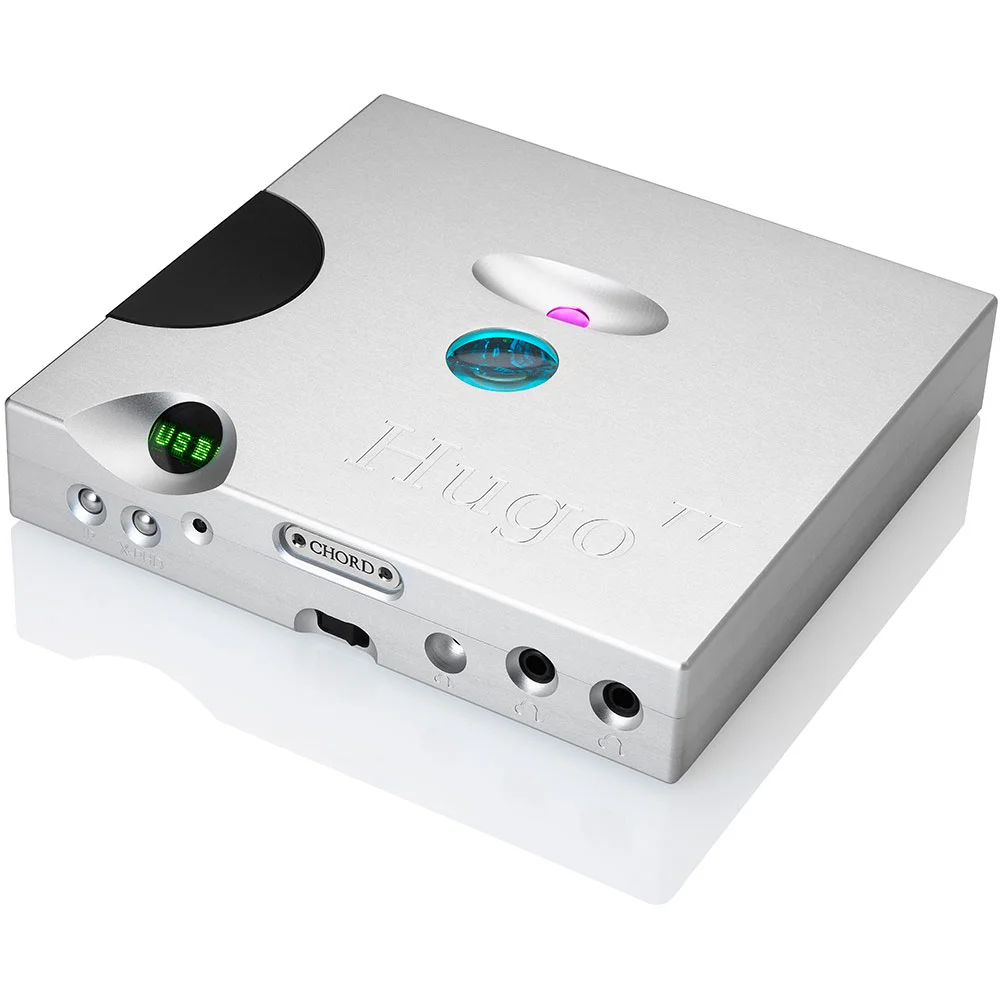With the new Hugo TT (Table Top) we’ve built on the extraordinary success of our genre-defining Hugo DAC/headphone amplifier. The new larger desktop-orientated device offers greater connectivity including a USB-B input, XLR outputs, two quarter inch headphone outputs, plus improved performance and features.
Compared to the more mobile Hugo, the Hugo TT gains a new larger chassis, remote control, an alphanumeric LED display with input/sample rate data, and improved sonic performance thanks to supercapacitors. Find out why Trusted Reviews considers the Hugo TT the best headphone amp they’ve ever heard, regardless of price, here.
Advanced sample rate capability
The Hugo TT is ready to take advantage of today’s advanced studio-master-quality (DXD) music files allowing music lovers to experience music in true high definition, along with the best possible reproduction of CD-quality music. Hugo TT supports up to 32-bit/384kHz audio via coax and USB, and 24-bit/192kHz over optical, plus DSD64 on all inputs and DSD128 via coax or USB (all via DoP).
In a key upgrade over the original Hugo, the Hugo TT benefits from a high-quality asynchronous B-type USB connection for both the SD and HD USB input. With two further digital inputs: a (new) BNC coaxial and optical (TOSLink), any connected component with a digital output can benefit from the Hugo TT’s advanced sound quality.
Bluetooth
To fully integrate with today’s digitally stored media, the new Hugo TT also has A2DP Bluetooth capability and uses a custom-made module with the aptX codec to feed a digital signal directly into the DAC circuitry, so even without cables, music can still be enjoyed.
Spartan 6 FPGA
The Hugo TT retains the same high-performance Spartan 6 FPGA that enabled Hugo to redefine the DAC genre in 2014. It has the same specification and measured performance as its mobile sibling, a device that “broke all records” for dynamic range in leading UK hi-fi magazine, Hi-Fi World, in the summer of 2014.
Supercapacitors
Being a home-orientated device, the Hugo TT has been designed to run continuously from the supplied charger, however Chord’s engineers have also improved the battery and added Supercap energy storage, a technology seen in F1 where supercacitors back-up the cars batteries by sharing the load and charge demands, thereby protecting them. They serve a similar purpose in the Hugo TT, extending the battery life as well as improving dynamics and demanding transients in recorded music.


